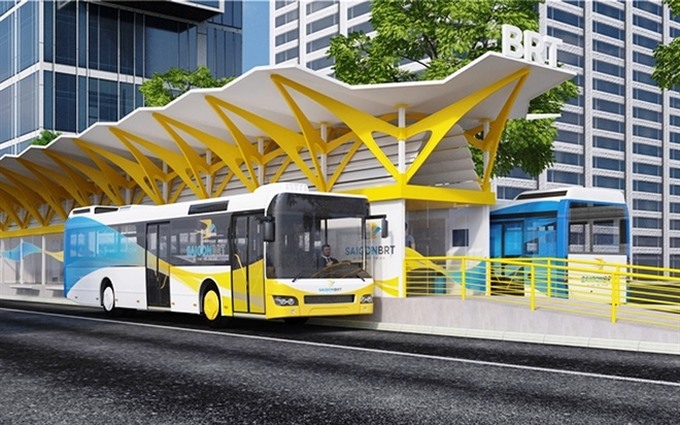 Society
Society

The HCM City administration has decided to reconsider its plans to build the city’s first bus rapid transit system (BRT) after being informed by the transport department that the project was not feasible.
 |
| An artist’s impression of the BRT station in HCM City. — Photo courtesy of HCM City’s Department of Transport |
HCM CITY — The HCM City administration has decided to reconsider its plans to build the city’s first bus rapid transit system (BRT) after being informed by the transport department that the project was not feasible.
Earlier, the HCM City People’s Committee had assigned the Urban Civil Works Construction – Investment and Management Authority to be the investor for the city’s first BRT route.
The BRT route was planned to operate on a total of 23 kilometres through districts 1, 2, 5, 6, 8, Bình Tân and Bình Chánh, with total investment of US$144 million.
However, the Transport Department said that only 17,700 passengers were projected to use the BRT route from Võ Văn Kiệt and Mai Chí Thọ streets, instead of the 24,700 passengers previously projected.
The figure is not that much higher than the number of people who use ordinary buses, and even lower on some routes, while the BRT would cost much more than ordinary buses, according to the department.
A BRT system would have required investment in a number of components, including waiting rooms, an intelligent ticket control equipment, and dedicated lanes on land areas not readily available for use in the city.
For these reasons, at a recent meeting with the Transport Department and investors, the vice chairman of HCM City’s People Committee, Trần Vĩnh Tuyến, agreed to develop a comprehensive green transport system including metro, high-quality bus and traditional bus routes. Previously, the government had approved six BRT routes for HCM City.
HCM City has three high-quality bus routes that connect Tân Sơn Nhất International Airport with downtown, hospitals and coach stations.
Buses on these routes have low-emission engines which meet European standards and surveillance cameras on board. — VNS




